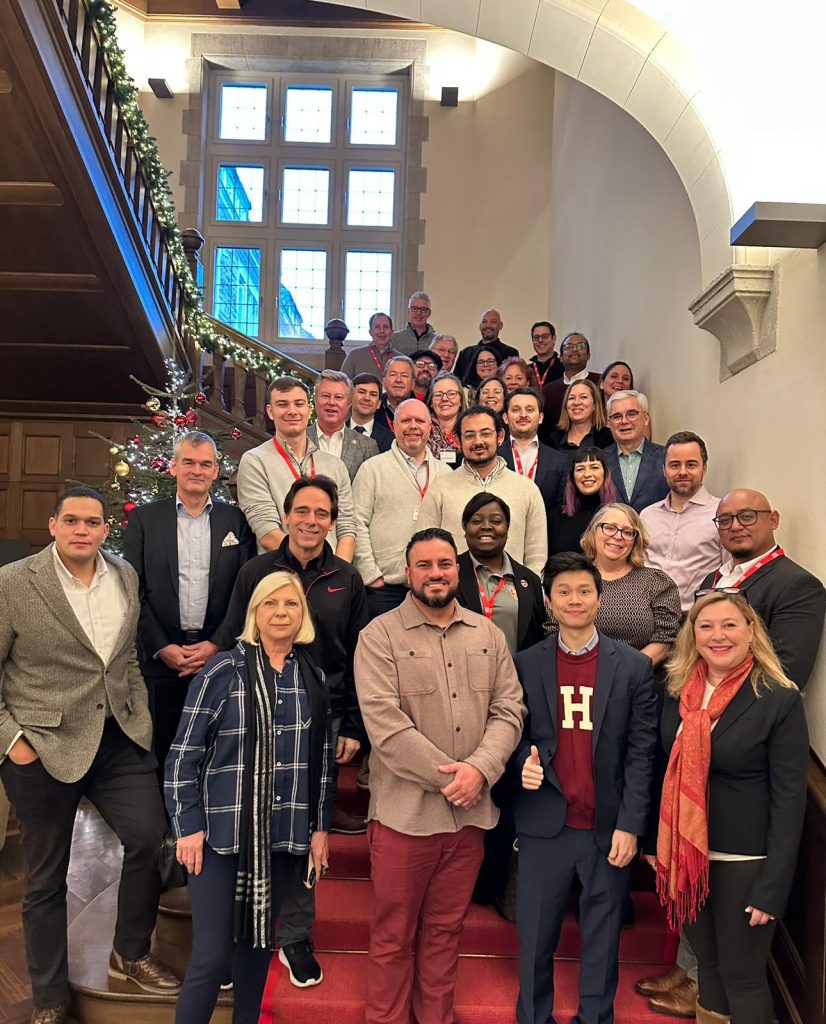Did You Know?
Germany provides examples of a regional vision for transit

Our local transit system has some work to do when it comes to being laser-focused on the needs of riders.
Fortunately, there’s an abundance of great examples around the world of successful regional transit systems.
I recently participated in a trip to Germany to learn more about the transit systems in Munich and Berlin with the goal of bringing back good ideas to share.
The group that went to Germany included elected officials, agency representatives, as well as leaders from local nonprofits, transportation unions, and businesses (see bottom photo).
REGIONAL TRANSIT IN BERLIN AND MUNICH
The reason we focused on Munich and Berlin is because they are comparable to Northeastern Illinois in a number of important ways:
- While the Munich region’s population is about half of ours, its population density is similar, and it has a higher number of registered vehicles per resident. The Munich region has more than double the number of riders than Chicagoland annually.
- Berlin’s region is similar in terms of square miles but has a much lower population density of 523 people per square mile compared to our 870 people per square mile. Despite that, the Berlin region has nearly 5 times the amount of transit rides annually – 1.5 Billion. Their residents take on average 245 trips per year compared to Chicago region, whose residents average just 36 trips per year.

In Berlin and Munich, a region-focused transit governance model has fostered the creation of a deliberate and thoughtful transit system that people want to use.
Agency leaders work across the state, county, and municipal levels of government to establish service levels and operational expectations that are common sense and effective. This results in great service.
What stood out the most to me was their regional vision that was squarely focused on the users of the system. This was elucidated by a few pearls of wisdom I heard from representatives of the regional transit organizations:
- Their motto is “one network, one timetable, one ticket.” Information is integrated and the whole system is oriented around the rider.
- “Mobility doesn’t end at the city boundaries.” They organize, integrate, and fund their system regionally with that mentality – not by one-off projects or happy coincidences.
- “We (the organizations operating transit) collectively compete with the car, not with each other.” Increasing mobility options and mode shift are the focus. Eyes on the prize.
What’s the result?
- High service availability: Very frequent, all day, bi-directional service with regular connections by design.
- High service integration: Timed, cross-platform intermodal transfers, with minimal infrastructure required
- Focus on the user experience:
- Integrated fares
- Integrated schedule
- Integrated customer information
BRINGING THE LESSONS HOME
We have the skills and know-how and bones in our region to do this. It’s not rocket science.
The essential difference is one of vision. We are in desperate need of a transformative vision for transportation in Illinois that will guide the legislation, policies, and funding investment.
RTA has been doing some good work to “meet the moment,” but it’s imperative that we look beyond the moment towards a rider-centered, regionally integrated, well-funded system. This is not the time to whittle around the edges.
Americans often view transit outside of the US, from Europe to Bogota and beyond, as something that’s amazing but also something we could never have. The reasons given range from our car culture to residential development patterns to government structure and taxation differences, and so on.
The easier the system is to use, the more reliable it is, the more frequently it comes, the safer it is, the more people that will ride it.
And the ripple effect of more ridership is powerful, not only for transit funding, but for cleaner air, reduced congestion, population growth, and economic activity.
It’s time to create an integrated regional system that a global region like ours demands.
We are grateful to have been included on this trip that was made possible with the support of Transit Center and Deutsche Bahn. The itinerary was extraordinarily meaningful; we are indebted to the many transit associations and government leaders who took time out of their busy scheduled to brief us.
For the Regional Transportation Authority’s December meeting of its Board of Directors, I offered testimony about lessons learned from the trip and how they could be adopted in Illinois. Read my full testimony or see my testimony on Youtube.
Make a Donation
Your tax-deductible donation supports the important work that Active Trans does throughout the region
